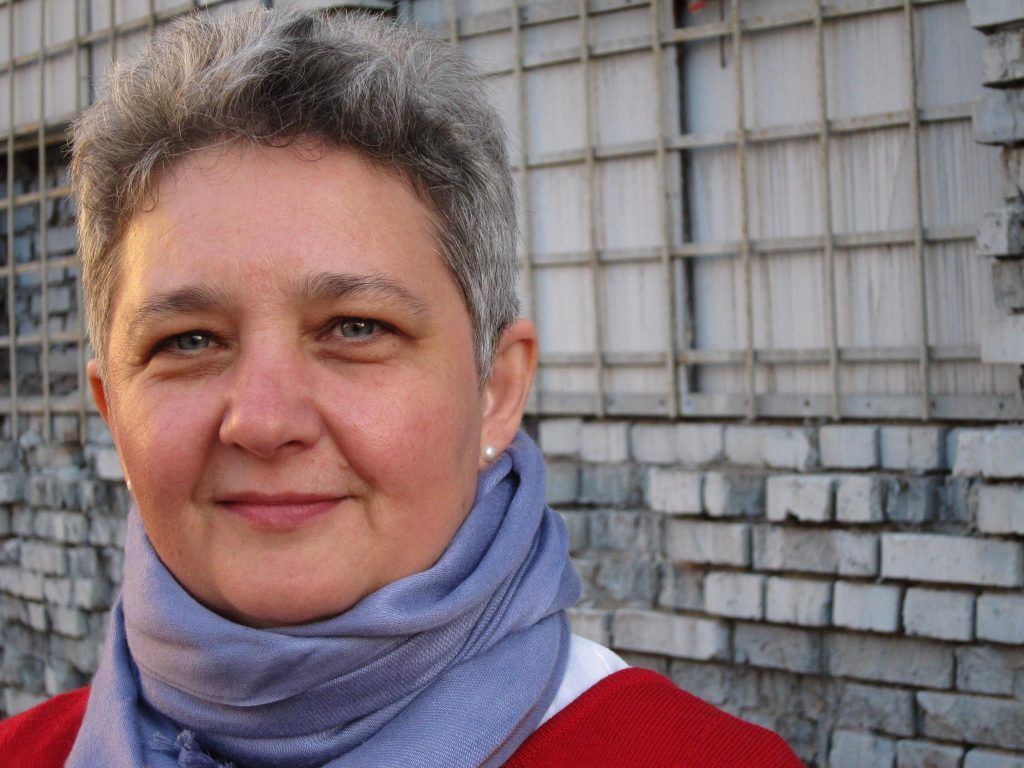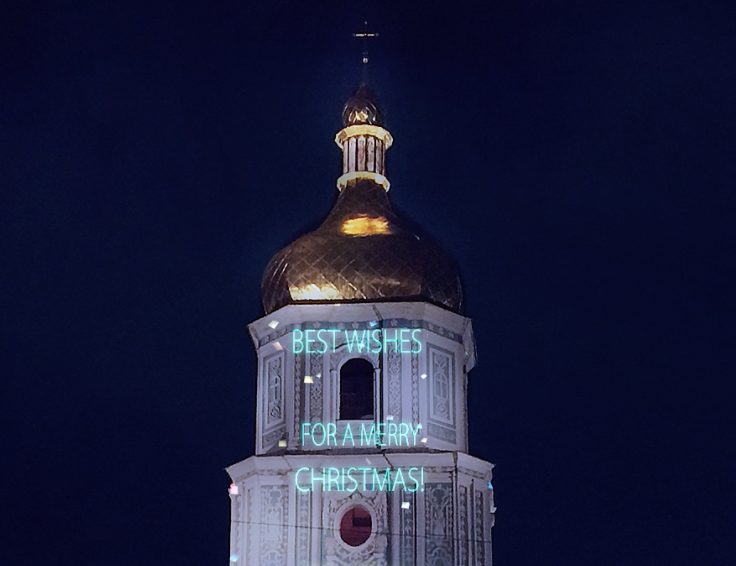“I would not consider writing with light on the bell tower of the Cathedral of Saint Sophia a Hanukkah tradition”—Diana Klochko

A conversation with art historian Diana Klochko about Hanukkah, Christmas, and New Year’s lights
Iryna Slavinska: How new is the Kyiv tradition of installing Hanukkah candles on Kontraktova Ploshcha?
Diana Klochko: They have been installed there for the past few years; this year, there were even two large candelabras. According to the Jewish tradition, the Hanukkah candelabra must be placed in the window so that everyone can see that the festivity is taking place. On the one hand, it is a domestic holiday; on the other, it is connected with the miracle that is possible for the entire Jewish community. These candles are supposed to show people who are outside that it is warm here and that here people remember that the tradition continues.
According to strict regulations, these candles are not used for practical purposes. You could not read by Hanukkah candles; it was supposed to be an absolute holiday, this fire was to be absolutely pure. It was not supposed to be used in any other way than to celebrate. In the public space, it is associated more with the fact that this holiday is part of the urban space. The same tradition exists in Chernivtsi.
The Hanukkah holiday began to be celebrated in the second century BC. This lighting of candles and lights and, later, the use of decorations—this seems to be a growing desire to get warm, to counter the darkness with more and more lighting.
This is connected precisely with cities. In the second half of the twentieth century, more lighting began to be installed, the illumination of cities in particular. This is a contemporary urban tradition, not a rural one.
All big cities, regardless of the pandemic, have retained illumination. This light counters the gloomy situation. I would say that it is an anti-depressive strategy. Candles are also associated with a feeling of fragility and a small hearth.
Iryna Slavinska: What is the connection between various lights, like garlands and candles?
 Diana Klochko: Electric garlands are always interesting from the standpoint of history. In the 1950s, light artists appeared; they created neon tubes, wrote with them, and presented light installations. Strange as it may be, this also gave a boost to the launching of the garland industry. They began to be manufactured and used as decorations sometime in the 1960s. At first, they were an imitation of real candles. Then as time went on, they began to be transformed into concepts. Later, this lighting became multicolored, and color projectors appeared. All these holidays—Hanukkah and Christmas—are associated with the mystery of light and the return of the sun.
Diana Klochko: Electric garlands are always interesting from the standpoint of history. In the 1950s, light artists appeared; they created neon tubes, wrote with them, and presented light installations. Strange as it may be, this also gave a boost to the launching of the garland industry. They began to be manufactured and used as decorations sometime in the 1960s. At first, they were an imitation of real candles. Then as time went on, they began to be transformed into concepts. Later, this lighting became multicolored, and color projectors appeared. All these holidays—Hanukkah and Christmas—are associated with the mystery of light and the return of the sun.
If we look at history, the first tree ornaments, made of glass, appeared not that long ago—in the second half of the eighteenth century. Large Chinese and Japanese balls were painted, and lamps appear in February. This is another continuation of the celebration of the New Year according to the Eastern calendar when huge, multicolored balls are lit.
Iryna Slavinska: Is there any connection between Hanukkah candles as well as other lights that in other faiths can burn someplace and the way Christmas illuminations look today?
Diana Klochko: Of course. All this is a very long and complicated path and the transformation of this tradition, particularly in cities. Something here is connected not just with the domestic, the private, but also with the public. Nevertheless, I would not consider writing in light on the bell tower of the Cathedral of Saint Sophia part of the Hanukkah tradition.
This program is created with the support of Ukrainian Jewish Encounter (UJE), a Canadian charitable non-profit organization.
Originally appeared in Ukrainian (Hromadske Radio podcast) here.
Translated from the Ukrainian by Marta D. Olynyk.
Edited by Peter Bejger.
NOTE: UJE does not necessarily endorse opinions expressed in articles and other materials published on its website and social media pages. Such materials are posted to promote discussion related to Ukrainian-Jewish interactions and relations. The website and social media pages will be places of information that reflect varied viewpoints.



















